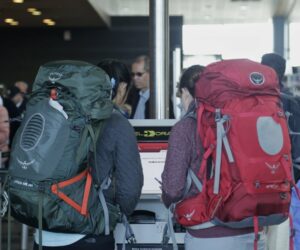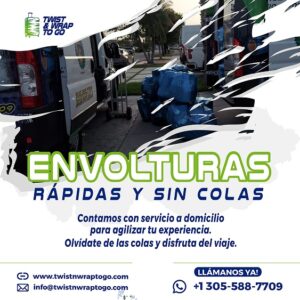Let’s be honest, packing for a trip can feel overwhelming. You aim to pack light, yet you don’t want to risk forgetting essential items and end up shopping instead of enjoying your journey.
Maximizing your carry-on allowance is a smart strategy for traveling light while ensuring you have what you need. However, navigating TSA regulations is crucial to avoid delays at security. From liquid limitations to permissible items like disposable razors, it’s vital to understand TSA rules when packing your carry-on.
If you’re looking to enhance your carry-on packing skills, keep reading. We’ve compiled a guide to what’s permitted in a carry-on bag, along with top carry-on options for your travels.
What is a carry-on bag?
Carry-on luggage ranges in styles and sizes, from hard-shelled spinners to soft-sided weekender bags and even travel backpacks. But the bag will need to fit the size regulations of your airline. The TSA doesn’t determine carry-on allowance; it’s left to your airline to decide the size of the items you bring onboard. Generally, most airlines implement a maximum size policy of 22 inches by 14 inches by 9 inches, including wheels and handles.
Your baggage allowance could also depend on your ticket type. Some basic economy tickets only allow for a personal item, such as a purse, rather than a piece of carry-on luggage. When it comes to the weight of the bag, you’ll want to ensure you can comfortably lift your carry-on up and into the overhead compartment efficiently. However, some airlines — particularly budget carriers — limit how much a bag can weigh.
Ultimately, if you’re planning to bring a carry-on bag on board, be sure to check your airline’s policies. Once you’ve determined your carry-on baggage allowance, you’ll then need to pack it with items that are permitted by the TSA.
What is allowed in your carry-on bag?
If you want to avoid checked baggage fees, you can often get away with traveling with just a carry-on bag. Here are some of the most noteworthy items you can pack in your hand luggage without worrying about getting stopped at airport security. You can find the entire list of permitted items on the TSA’s website.
Alcoholic beverages
Alcoholic beverages are permitted in carry-on luggage as long as they are less than or equal to 3.4 ounces. Mini bottles of alcohol in your carry-on must also be able to comfortably fit into a single quart-sized bag. However, keep in mind that airline policies on alcohol are strict, and the FAA prohibits travelers from consuming alcohol on board an aircraft unless it was served by a flight attendant. In other words, the alcohol you can pack in your carry-on bag cannot be consumed on board.
Baby food and equipment
Baby food, baby formula, breast milk and juice are all allowed in reasonable quantities. Formula, breast milk and juice should be removed from your bag and screened separately. Additionally, ice packs, freezer packs, frozen gel packs and other accessories required to cool formula, breast milk and juice are allowed in your carry-on. Additional items such as baby carriers and child car seats are also permitted so long as they’ll fit in the airplane’s overhead bin or underneath your seat.
Disposable razors
Disposable razors are permitted in carry-on luggage. However, loose razor blades, such as box cutters or those not in a cartridge, are not permitted in carry-on luggage.
Electronics
Most personal electronics, such as hair care products or handheld devices, are permitted in carry-on bags. Adult toys are also permitted in hand luggage.
Lighters and matches
Passengers are permitted to pack disposable lighters in their carry-on luggage. Additionally, one book of safety (non-strike-anywhere) matches are permitted as carry-on items. However, strike-anywhere matches are prohibited.
Nonflammable liquids under 3.4 ounces
Nonflammable liquids, gels and aerosols (such as shampoo or deodorant) are permitted in hand luggage as long as they follow the TSA’s 3-1-1 rule for liquids. This means that you can bring one quart-sized bag of liquids limited to travel-size containers that are 3.4 ounces or less per item.
Prescription medication
The TSA allows larger amounts of medically necessary liquids, gels and aerosols, but you must declare them to the TSA officers at security and expect to be pulled for further inspection.
Portable chargers
Power banks and portable chargers are only permitted in carry-on luggage. However, they must have a rating of 100 watt hours (Wh) per battery or less. You can bring two larger spare batteries (up to 160 Wh) if you have airline approval.
Vitamins and supplements
FDA-approved vitamins and supplements are permitted in carry-on luggage.
What isn’t allowed in your carry-on bag?
There are obvious no-fly items, such as weapons and full water bottles, and then there are prohibited items that may surprise you. Here’s what you’ll want to pack in your checked luggage or leave at home entirely. You can find a full list of prohibited items on the TSA’s website.
Self-defense items, ammunition and sharps
Self-defense items, including ammunition, are banned from carry-on luggage and in some cases from checked luggage as well. This also includes most martial arts equipment, pepper sprays, firearms, chef’s knives, corkscrews and other sharp items.
Flammable or explosive material
Flammable or explosive material, such as fireworks, flares and replicas of explosive materials, are strictly prohibited not just from hand luggage but also from checked baggage.
Sporting goods and equipment
Certain large sporting goods and equipment, such as golf clubs or hockey sticks, are not allowed in carry-on luggage. However, basketballs, soccer balls and other small sporting goods are typically permitted.
Text taken from: https://edition.cnn.com




